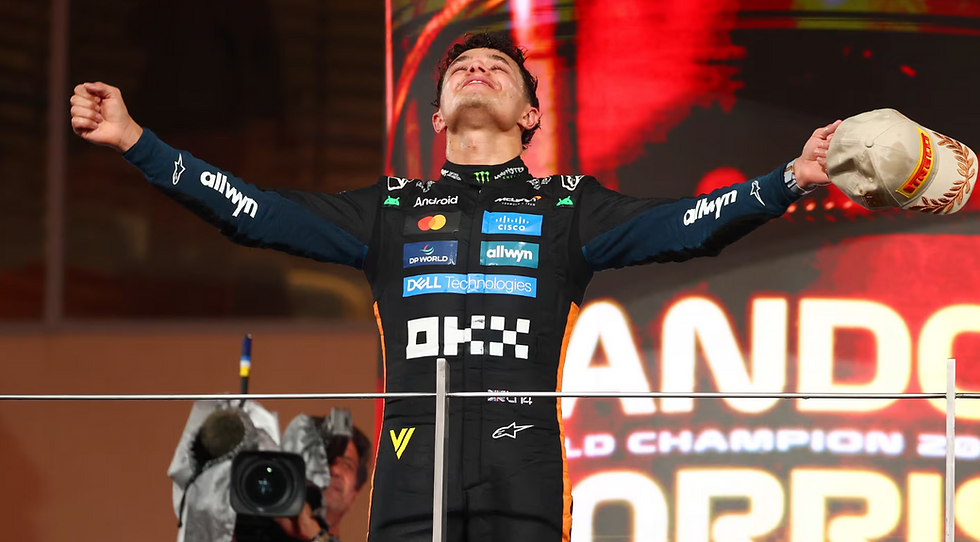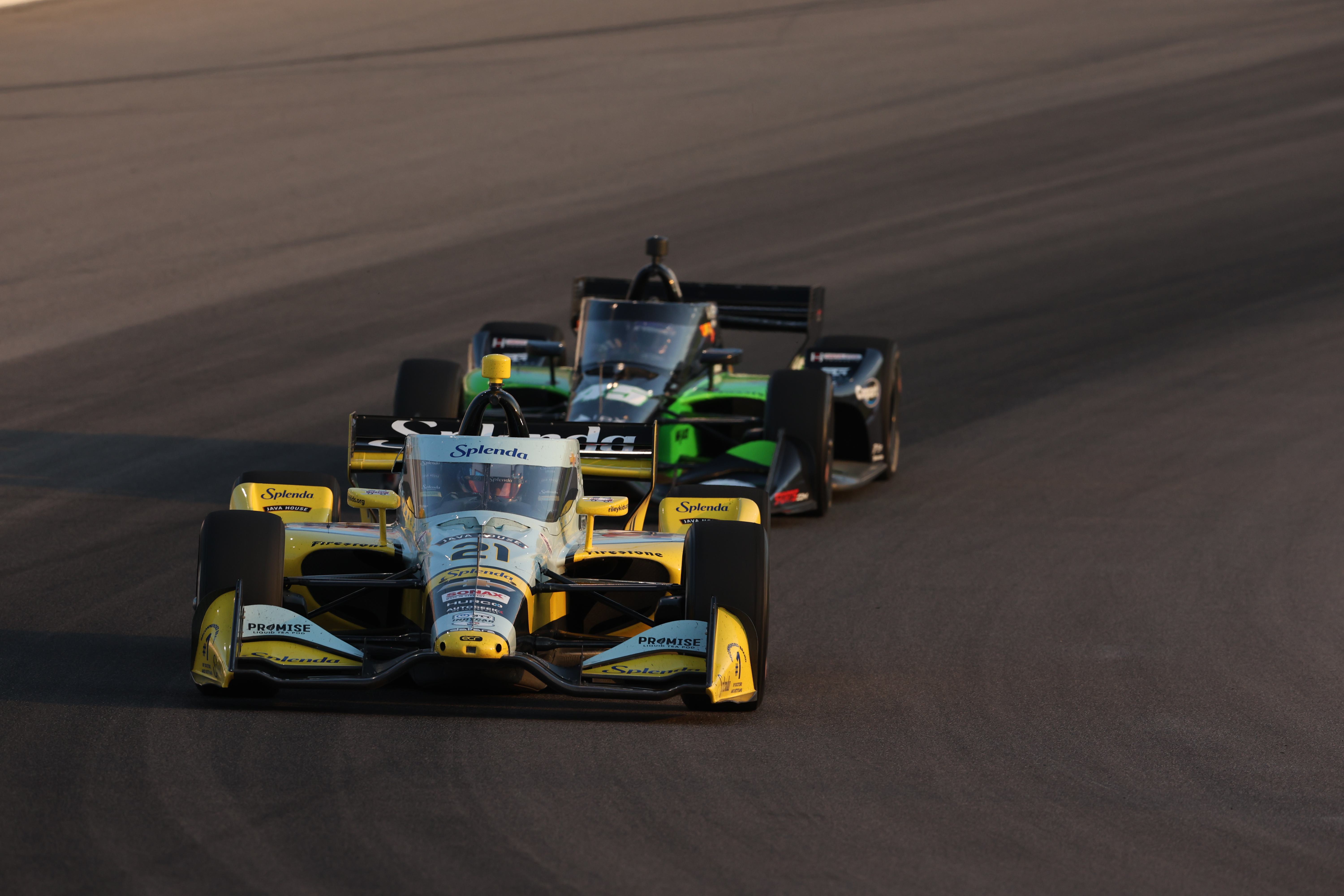Zandvoort Facts: Everything You Need to Know About the Dutch Grand Prix
- Tiannah Pedler
- Aug 31, 2022
- 4 min read
Written by Tiannah Pedler, Edited by Vyas Ponnuri

The Dutch Grand Prix is fast approaching, and it’s time to get up to speed with all things related to Circuit Zandvoort. The Dutch Dunes opened in 1948, the same year as Silverstone, and was originally a combination of permanent track and public roads. The first Grand Prix at this track took place in 1952.
The 4.259km (2.646 mi) long track became a regular on the calendar until 1985. The 72-lap race returned to the Formula One calendar in 2021 after a 36-year hiatus. It’s a challenging track for drivers, being an undulating surface flowing through the landscape like a rollercoaster.
The stunning track has quickly become a fan favourite, with drivers and mechanics alike describing the preceding year’s experience as an unforgettable one; “crazy” is just one of the epithets used by drivers to describe the circuit. Calum Nicholas, Senior Power Unit Technician for Red Bull Racing, said Zandvoort “set a new bar” in terms of its atmosphere when speaking to Pitstop podcast. It’s certainly one to watch out for, in terms of fan experience.
Here are some other Zandvoort facts to get you ready for the upcoming Dutch Grand Prix.
NASCAR-Worthy Banking
In the last few years, there has been a trend in F1 circuits to build off-camber corners, a fad which Fernando Alonso described as “sad” after experiencing the new and improved Zandvoort. Prior to its Formula One return, the track underwent major improvements that rallied against this trend, including an exceptionally steep banked corner.
The final corner features an 18-degree angle – twice that of the Indianapolis Motor Speedway. However, DRS is not permitted on this banked, flat-out section of the high-speed track, thereby limiting the zone to make an overtake into Turn One.
Speed is certainly the order of the day, with the drivers describing Zandvoort as a rollercoaster. Lewis Hamilton holds the current lap record, having set a 1:11.097 towards the end of the 2021 Dutch Grand Prix.
Royal Winnings
Although the first Formula One Grand Prix was not hosted at Zandvoort until a few years later, a non-championship race was held there when the track first opened in 1948. Of the 22 entrants, 21 were British drivers.
However, the final entrant was Prince Birabongse Bhanudej Bhanubandh of Thailand (then Siam). Better known as Prince Bira, the member of the Thai royal family went on to win the race after starting fourth in a Maserati 4CL.
Bira’s fastest lap is reported to be approximately two minutes, though sources vary with exact estimates. Motor Sport reported the Prince’s fastest lap to be 77.86 mph, much slower compared to the cars we see zipping around the circuit today.
Prince Bira was the only Southeast Asian driver to compete in Formula One until 2001, when Malaysia's Alex Yoong joined Minardi.
The next Thai driver to join the ranks is Williams’ Alexander Albon, who debuted in 2019. This season will see him compete in his first Dutch Grand Prix.

Home of the Orange Army
The Netherlands is home to the Orange Army, with a rally of support expected for Red Bull driver, and now reigning Champion Max Verstappen.
Verstappen fans are spread across the globe, regularly thronging the Red Bull Ring in Austria too. It’s likely that we will see enormous levels of support for Verstappen and Red Bull, so expect the orange flares to be out in full force once again.
With this being the second Dutch Grand Prix after a long break, there are likely to be quite a few people trying to snatch up tickets for the whole weekend. Last year, 72,000 fans attended the event. Zandvoort could quickly become a calendar favourite, especially considering the hype around last year’s experience, and glowing reviews from attendees.
For now, it’s set to appear until 2023, with the option available to extend for another two years at the Dutch Dunes.
How Likely Are Major Incidents?
The 1961 Dutch Grand Prix is a very special one. It’s one of only a few races in Formula One history in which all the cars that started made it across the finish line.
But what’s more remarkable is that none of the fifteen cars stopped for fuel or to change their tyres. It’s the only race in history without a single pit stop.
This is a thing of the past, though. The new Zandvoort track seems to host higher risk of incidents. Last year’s running of the event saw six red flags in the practice and qualifying sessions. The race itself, though, passed largely without incident, with only two retirements from AlphaTauri’s Yuki Tsunoda and Haas driver Nikita Mazepin.
Final Thoughts: What Can We Expect from the 2022 Dutch Grand Prix?
Heading into the 2022 Dutch Grand Prix, Max Verstappen is flying ahead of the pack, a whopping 93 points ahead of his teammate Sergio Perez. Given the sheer speed of the RB18, and the support that’s likely to show up for Verstappen, it is expected to be the Dutch national storming ahead in his home Grand Prix.
Anything could happen, though. Regardless, it looks set to be another exciting weekend in Formula One, and one that you won’t want to miss.








Comments